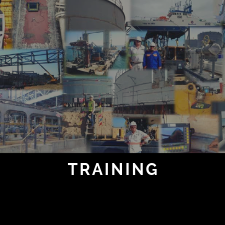WITS
Wavetec Inspection & Training Services
Introduction to Non-Destructive Testing (NDT)
For visitors who are not already familiar with Non-destructive testing (NDT), the general information below is intended to provide a basic description of Non-destructive testing and the most common test methods and techniques used when performing Non-destructive testing.
Non-destructive testing is a wide group of analysis techniques used in science and industry to evaluate the properties of a material, component or system without causing damage.
Terms Of Technology
The terms Nondestructive examination (NDE), Nondestructive inspection (NDI), and Nondestructive evaluation (NDE) are also commonly used to describe this technology. Because NDT does not permanently alter the article being inspected, it is a highly valuable technique that can save both money and time in product evaluation, troubleshooting, and research.
Testing Methods
Common NDT methods include Ultrasonic Testing, Magnetic Particle Testing, Liquid Penetrant Testing, Radiographic Testing, Wall Thickness Testing, Phased Array, Hardness Testing, Long Range Ultrasonic Testing, Magnetic Flux Leakage and Rail Flaw Detection Rail Inspection.
NDT Fields
NDT is commonly used in forensic engineering, mechanical engineering, petroleum engineering, electrical engineering, civil engineering, systems engineering, aeronautical engineering, medicine, and art.
What Makes Us Different
In contrast to NDT, other tests are destructive in nature and are therefore done on a limited number of samples (“lot sampling”), rather than on the materials, components or assemblies actually being put into service.
These destructive tests are often used to determine the physical properties of materials such as impact resistance, ductility, yield and ultimate tensile strength, fracture toughness and fatigue strength, but discontinuities and differences in material characteristics are more effectively found by NDT.
Benefits of NDT
Today modern nondestructive tests are used in manufacturing, fabrication and in-service inspections to ensure product integrity and reliability, to control manufacturing processes, lower production costs and to maintain a uniform quality level.
During construction, NDT is used to ensure the quality of materials and joining processes during the fabrication and erection phases, and in-service NDT inspections are used to ensure that the products in use continue to have the integrity necessary to ensure their usefulness and the safety of the public.
Courses We Offer
Non-Destructive Training
WITS Training department offers NDT training that compliant with SNT-TC-1A, Training courses are presented in accordance with the principles contained in WITS’ Training Scheme details of which are available on request. (Course scheduling depends on minimum student enrolment.)
Please contact us for further information or visit are training page:



